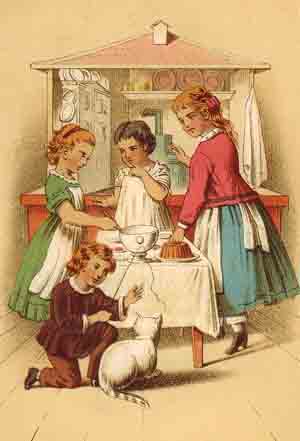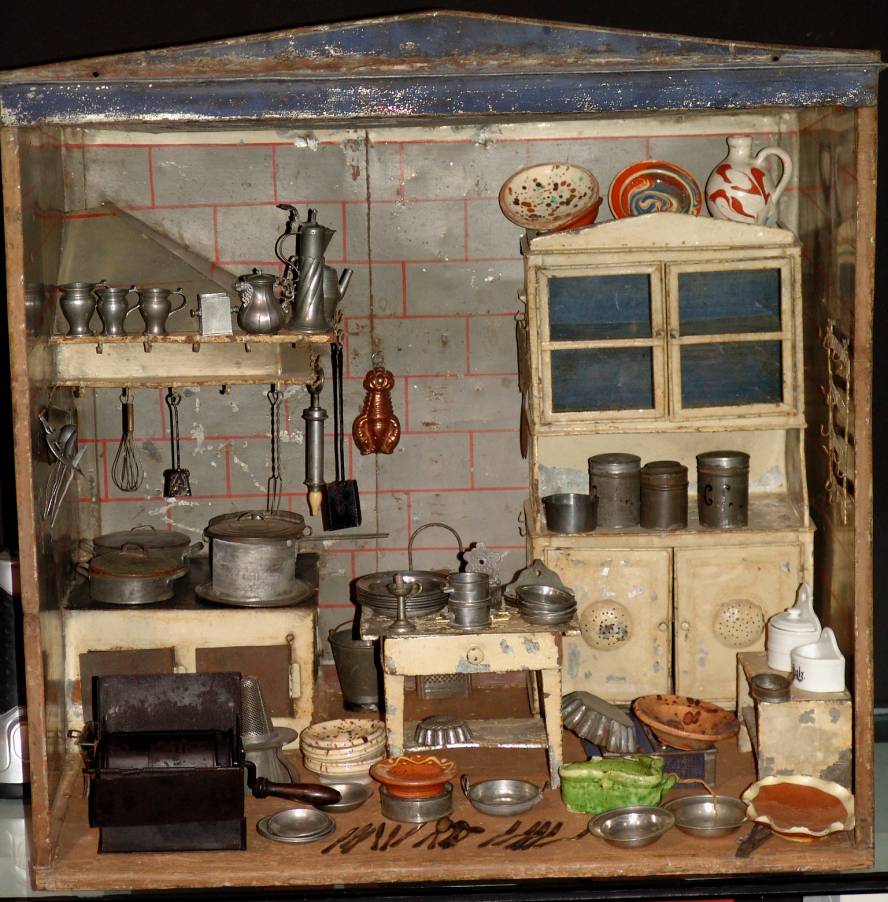History of the doll kitchens
Previously, there were only doll kitchens in the doll houses of the 17th and 18th century, which were mostly more adult objects than children's toys. Towards the end of the 18th century, separate childrens' kitchens were developed for children, but herds and other appliances were still painted or wooden dummies. This was accompanied by a reduction in the number of families due to social and economic upheavals, as well as a new perception of the child as an individual and childhood as a part of life.
From around 1850 onwards, there were also large 47 inch sized dollcakes, which were equipped with spirit stove and other, partially functional, kitchen appliances, such as an ice machine, icebox, agitator, bread slicer e.c. Were equipped. In addition to the kitchenettes, which suggested three rooms with their own space but were not suitable for "real" cooking because of the spatial restriction, larger cookers, dishes and appliances were developed at the same time. These freed flock, of metal, were fired with alcohol. And depending on the size, they were equipped with several hotplates, waterpipe and water vessels for warm water.

The puppet book by Henriette Davidis expressly distinguishes between "meals made on the doll's heart" and "dishes without a hearth," ie, cold dishes. And another department devoted to the "flower kitchen or food for the doll". Although for the dolls the "flowery kitchen" is enough, real food is prepared on a doll's heart - and presumably consumed by the children themselves.
Nuremberg puppet book by Tante Betty, Nuremberg 1914, publisher of the Hans Lotter'schen Book printing

Valuable and at the same time dangerous toys
Nevertheless, puppets and puppets were usually only used for a short time, they were prepared for Christmas and placed under the Christmas tree with ingredients. The children of the family could then play with the kitchen and stove until the Christmas tree was cleared of Maria Lichtmess (February 2). Then the toys were packed and cleared until the next Christmas party. In addition, cooking with alcohol was also very dangerous at the time, and explosions and injuries are reported.
Like other toys for children, they represent a source of cultural research. This toy was originally reserved for children of the middle-class or even noble class. Workers, on the other hand, often had to participate in the production of toys. Such an elaborate toy was prohibitive for your families. Dolls' kitchens also clearly reflected the high social status of their owners.

